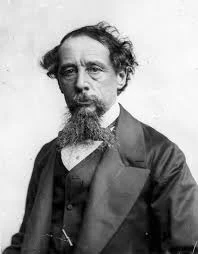Charles Dickens’ A Tale of Two Cities is a powerful historical novel that captures the chaos, violence, and human cost of the French Revolution. Set in both London and Paris during the late 18th century, the novel portrays the dramatic social upheaval and revolutionary fervor that characterized this era. Through its vivid characters and gripping narrative, Dickens explores themes of justice, vengeance, class struggle, and the cyclical nature of violence.

The novel opens with the famous line, “It was the best of times, it was the worst of times…,” signaling the duality of the period. Dickens presents the Revolution as both a necessary response to aristocratic cruelty and a cautionary tale about the dangers of mob justice and radical vengeance. He sympathizes with the suffering of the French peasantry, vividly depicting their poverty, oppression, and desperation. The scene in which peasants drink spilled wine from the streets is symbolic of their hunger—both literal and metaphorical—for change.
However, Dickens does not idealize the revolutionaries. Characters like Madame Defarge represent the darker side of revolutionary zeal. Her obsessive desire for revenge, symbolized by her knitting of execution lists, reveals how personal grief and hatred can fuel mass violence. The Reign of Terror is portrayed as a brutal and indiscriminate phase, where justice is replaced by bloodshed and fear. Dickens warns against the loss of humanity and moral compass when political ideology turns into fanaticism.
In contrast, characters like Charles Darnay, a French aristocrat who rejects his privileged past, and Sydney Carton, whose ultimate sacrifice symbolizes redemption, reflect Dickens’ belief in personal transformation and moral integrity. Their stories suggest that true revolution must begin within the individual—not merely through external political upheaval.
By setting the narrative in both England and France, Dickens also offers a subtle comparison. While England is portrayed as relatively stable, France descends into chaos, suggesting a warning to Dickens’ own society about the dangers of ignoring social injustice.
In conclusion, A Tale of Two Cities provides a complex and balanced portrayal of the French Revolution. Dickens acknowledges the legitimacy of the people's grievances while also condemning the excesses of revolutionary violence. The novel remains a timeless reflection on justice, power, and the human cost of political transformation.

Comments
Post a Comment
Comment